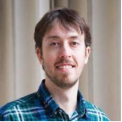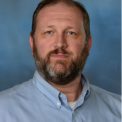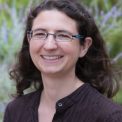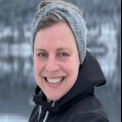Events Calendar View
-
CSP Lunch Seminar
Feb 1, 2022
Numerical Integration with Wang-Landau Sampling
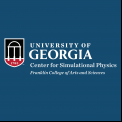
Guest: Prof. David Landau, Center for Simulational Physics, University of Georgia
Tuesday, February 1, 2022 12:45 pm - 1:45 pm
Location: Zoom Meeting -
Departmental Colloquium
Feb 3, 2022
Self-Organization of Lifelike Behaviors
-
CSP Lunch Seminar
Feb 8, 2022
Simulating Entanglement Purification and Chaos on IBM Quantum Computer
-
Departmental Colloquium
Feb 10, 2022
Joint Theoretical and Experimental Efforts to Create New Atomic Data for Astrophysics
Almost everything we know about the Universe has been discovered through the light that reaches us from the stars, galaxies, nebulae, and other astrophysical objects. The use of spectroscopy to analyze this light has yielded information about size, temperature, composition and dynamics of a wide array of astrophysical objects from comets to planetary nebulae. No field of science places higher demands on the quantity and accuracy of atomic data than astrophysics. This data is produced by Herculean efforts of both theorists and experimentalist, but both are often needed to overcome the shortcomings of the other. This talk will discuss the aspects of some new, collaborative, joint theoretical and experimental projects to produce new atomic data that is improved for analysis and modeling of data from the increasing observational capacity of our most advanced ground- and space-based telescopes.
-
Departmental Colloquium
Feb 17, 2022
Near-field microscopy for nanoscale materials characterization
Semiconducting nanostructures have been proposed as material platforms for a wide variety of photonic, electronic, and photovoltaic elements. In order to realize these applications, careful design and characterization of electronic properties such as dopant concentration, activation, and distribution are needed. I will discuss the use of near-field optical microscopy as a non-destructive method for chemical, structural, and electronic imaging in nanomaterials, focusing on a specific application, the study of axially-doped silicon nanowires (SiNWs). We can detect local changes in the electrically-active doping concentration from the free-carrier absorption in both n- type and p-type doped SiNWs. The < 20 nm spatial resolution allows us to directly measure dopant transition abruptness and charge carrier properties in the vicinity of interfaces in single and multi-junction SiNWs, both in the infrared and the microwave spectral regimes. However, the tip is perturbative in terms of both the electromagnetic wave (frequency-resolved) and electrostatic (charge carrier redistribution) interactions, and this affects the measured results, an important consideration in nanostructured materials especially. Our results demonstrate the utility of near-field spectroscopy in probing local properties of nanomaterials, but emphasize the little-understood convolutional role of the tip in many forms of scanning probe microscopy.
-
Departmental/CSP Colloquium
Feb 24, 2022
The interplay between memory and potentials of mean force
The Langevin equation is widely used to model coarse-grained dynamics of soft and biological materials. However, it is not obvious for which systems and which processes the Langevin equation predicts a good approximation to the true dynamics. In this talk we will give an introduction to projection operator formalisms as a tool to systematically coarse-grain dynamics. We will show under which approximations the Langevin equation can be obtained from the dynamics of the underlying microscopic system and in which cases it makes sense to introduce a potential of mean force. We demonstrate the implications of our derivation for the structure of memory terms and for generalized fluctuation-dissipation relations. We show, in particular, that the widely used, simple structure which contains a potential of mean force, a memory term which is linear in the observable, and a fluctuating force which is related to the memory term by a fluctuation-dissipation relation, is neither exact nor can it, in general, be derived as a controlled approximation to the exact dynamics.
Page 114 of 121, showing 6 records out of 723 total, starting on record 679, ending on 684


